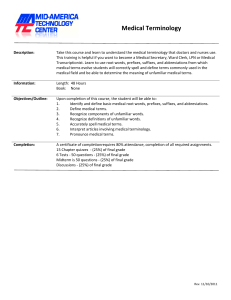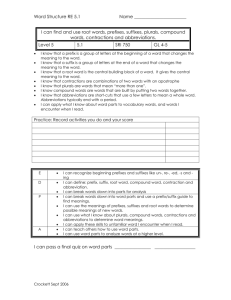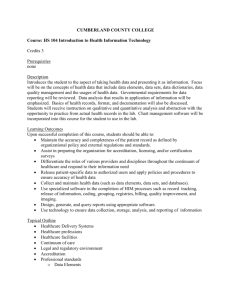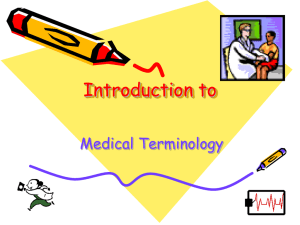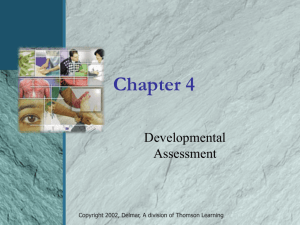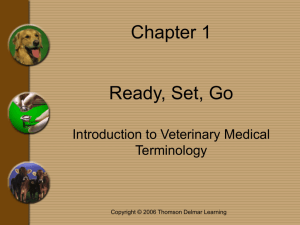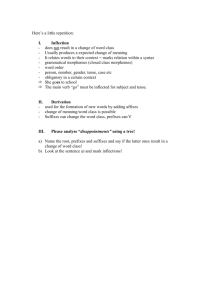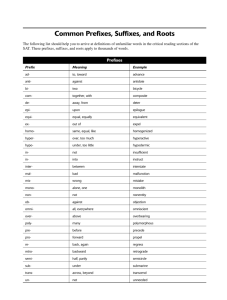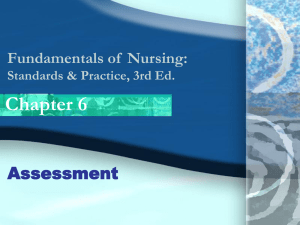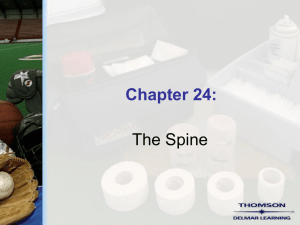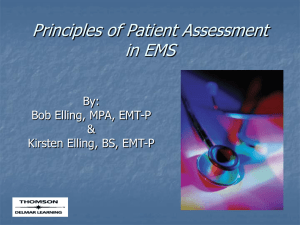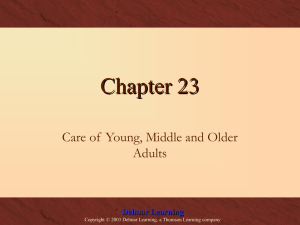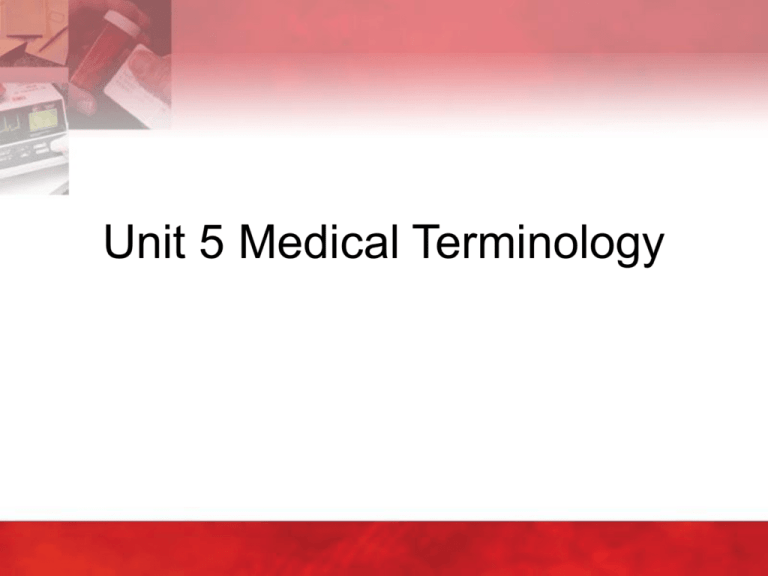
Unit 5 Medical Terminology
5:1 Using Medical
Abbreviations
Shortened forms for ease
and convenience
Usually just letters
Health care workers are expected to
recognize most common abbreviations
Agencies have their approved lists of
abbreviations – if not on list, do not use
Copyright © 2004 by Thomson Delmar Learning. ALL RIGHTS RESERVED.
2
5:2 Interpreting Word Parts
Impossible to memorize all the medical
words individually, so determine meaning
of words by breaking it into parts
These word parts are used over and over
in different combinations
If the word parts are known, then the word
can be broken down and interpreted
Copyright © 2004 by Thomson Delmar Learning. ALL RIGHTS RESERVED.
3
Interpreting Word Parts
(continued)
Prefix: syllable or word placed at the
beginning of a word; usually serves to
further define the word root
Suffix: syllable or word placed at the end
of the word; usually describes what is
happening to the word root
Word Roots: main words or parts to which
prefixes and suffixes can be added
Copyright © 2004 by Thomson Delmar Learning. ALL RIGHTS RESERVED.
4
Interpreting Word Parts
(continued)
Prefixes and suffixes have set meanings
When prefixes, suffixes, and/or word
roots are joined together, vowels are
frequently added
Common vowels used: a, e, i, ia, io, o, u
Vowels are not used if the word root or
suffix begins with a vowel
Examples
Copyright © 2004 by Thomson Delmar Learning. ALL RIGHTS RESERVED.
5
Summary
Health care workers have a unique set of
abbreviations and words to communicate
medical information
By learning basic word parts, they may be
able to interpret the meaning of a word
even if they have never seen it before
It is also important to learn correct
spellings for word parts so medical terms
will be interpreted properly by others
Copyright © 2004 by Thomson Delmar Learning. ALL RIGHTS RESERVED.
6



